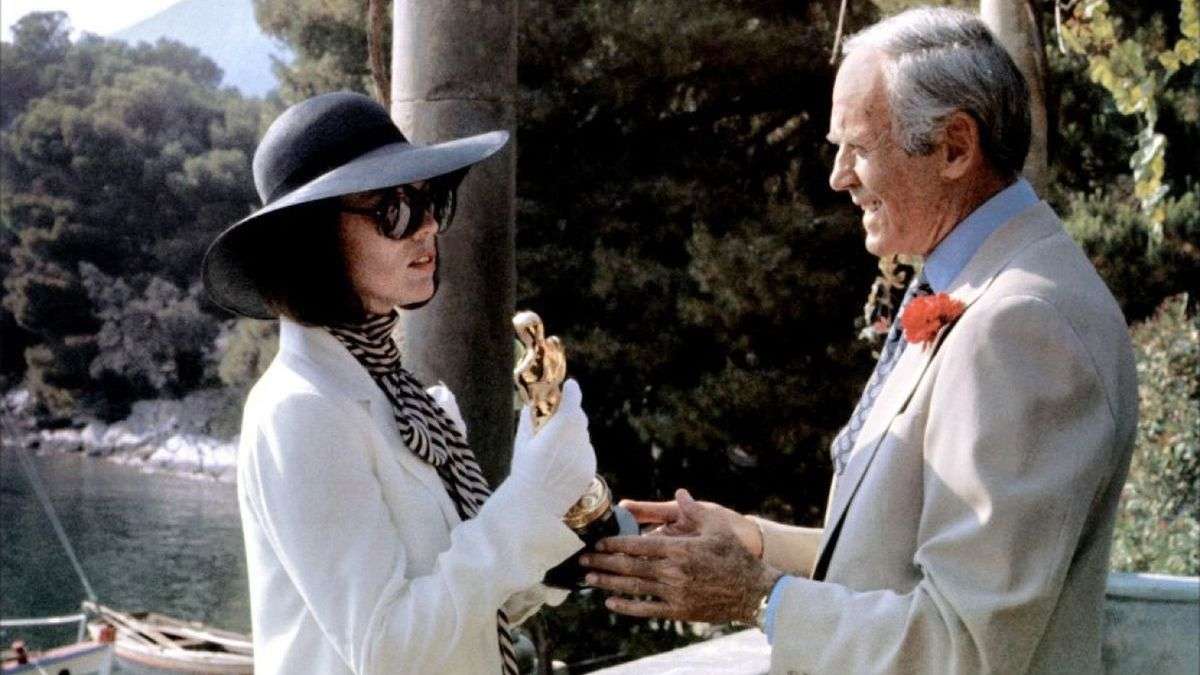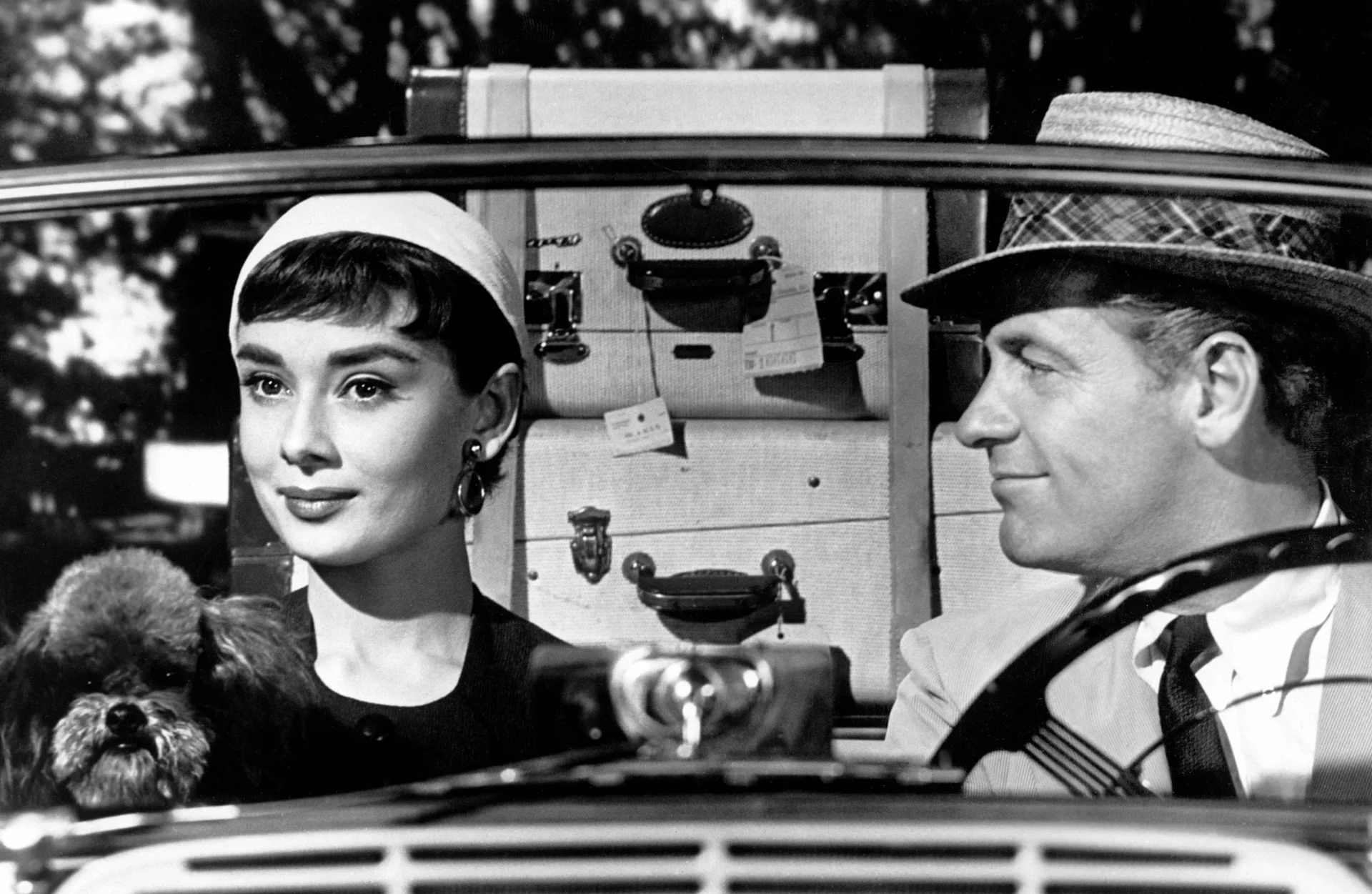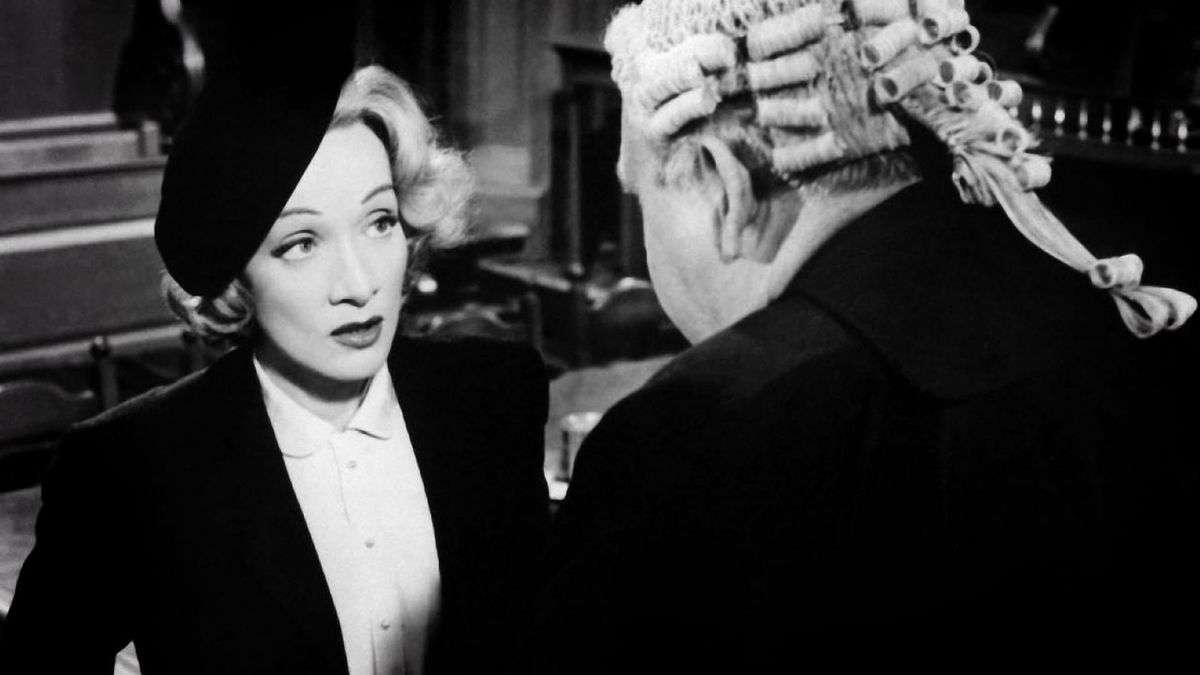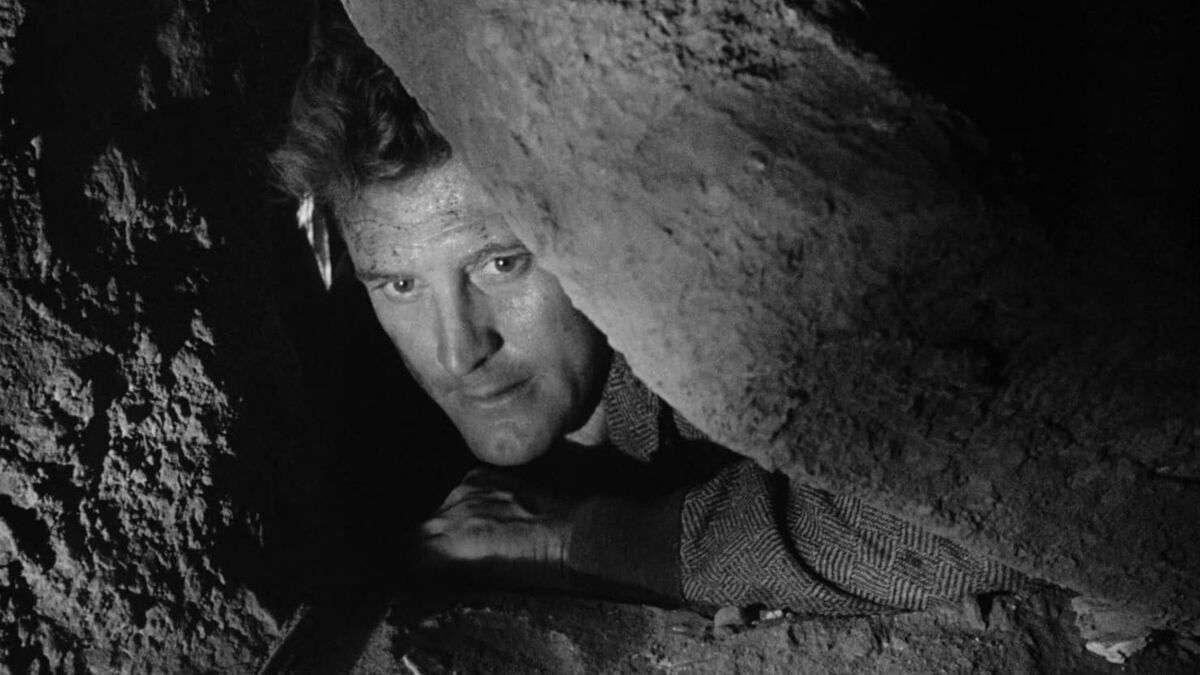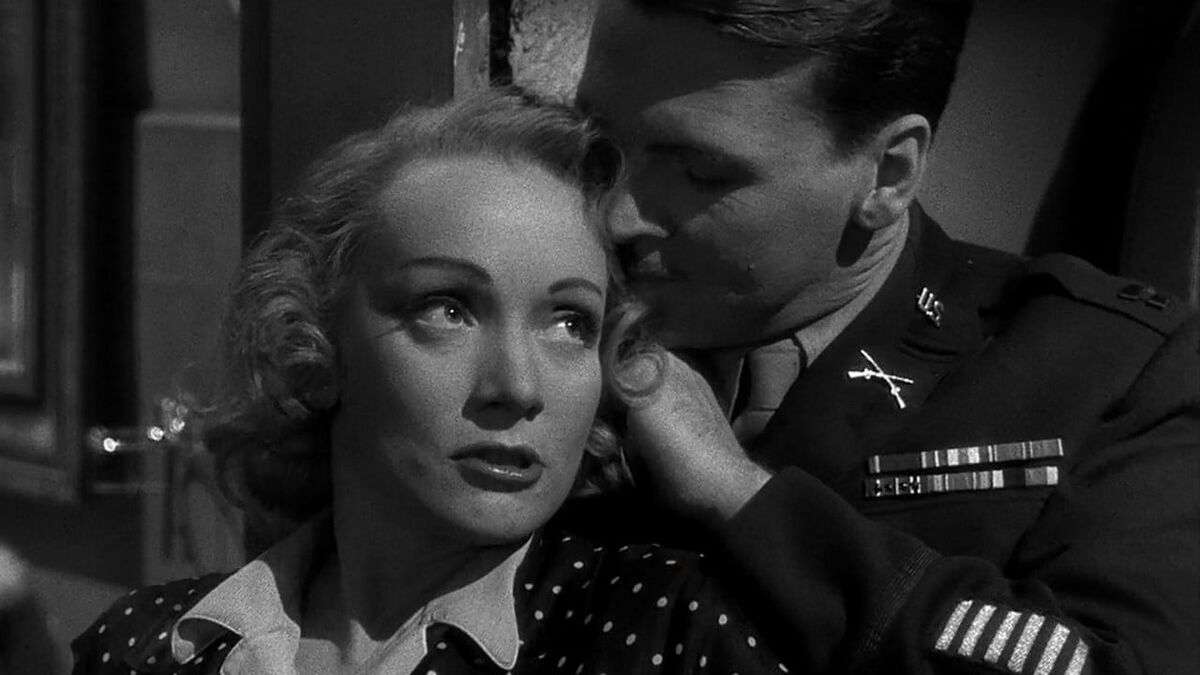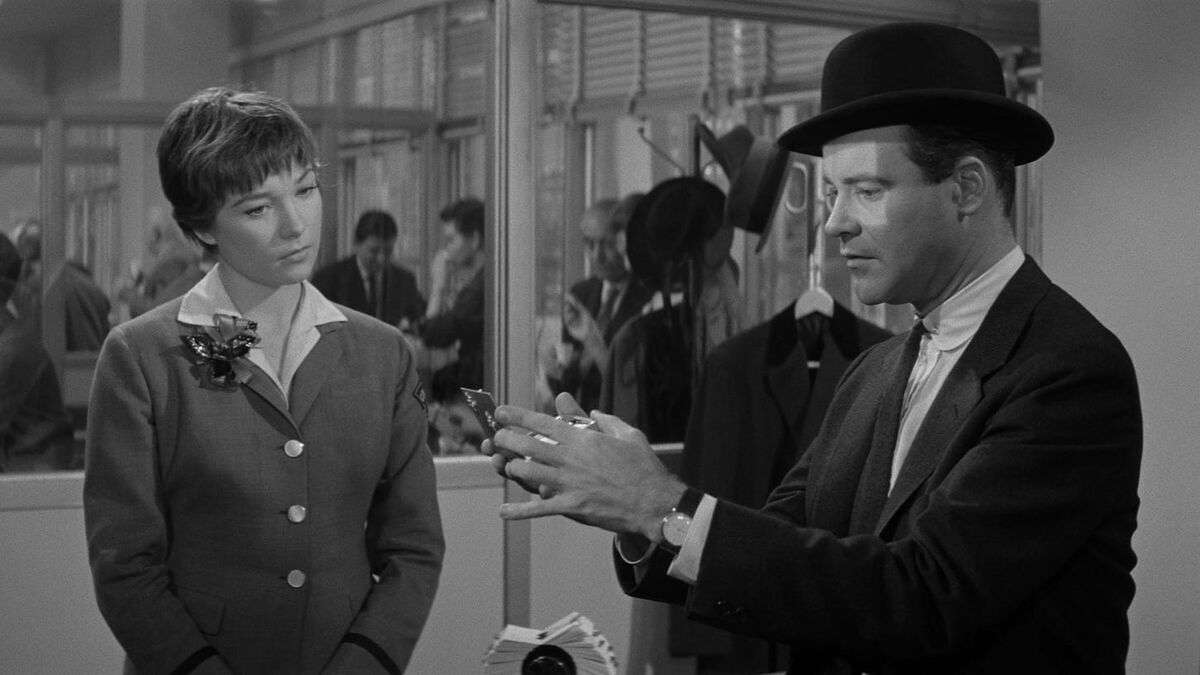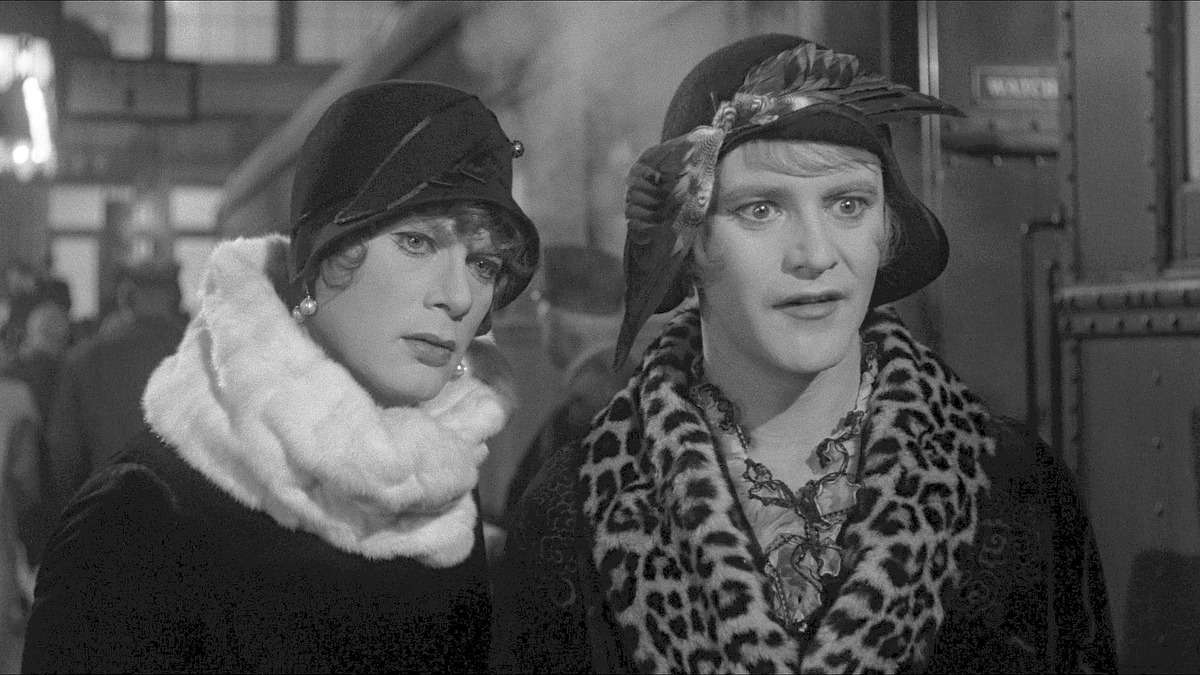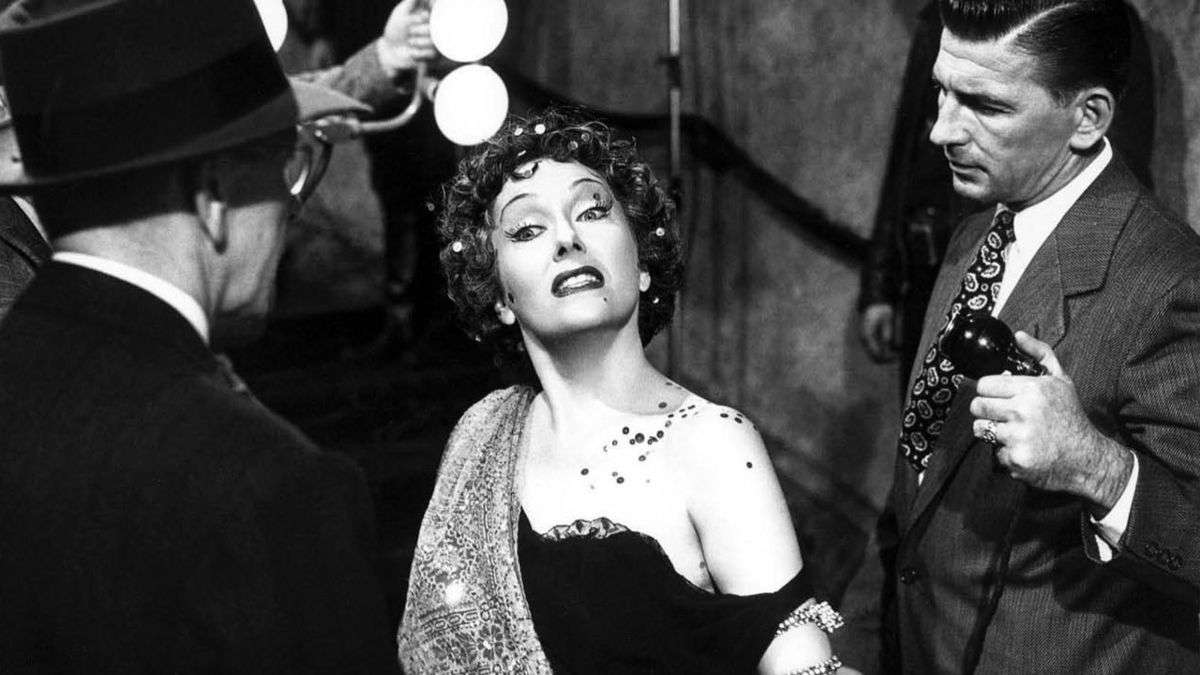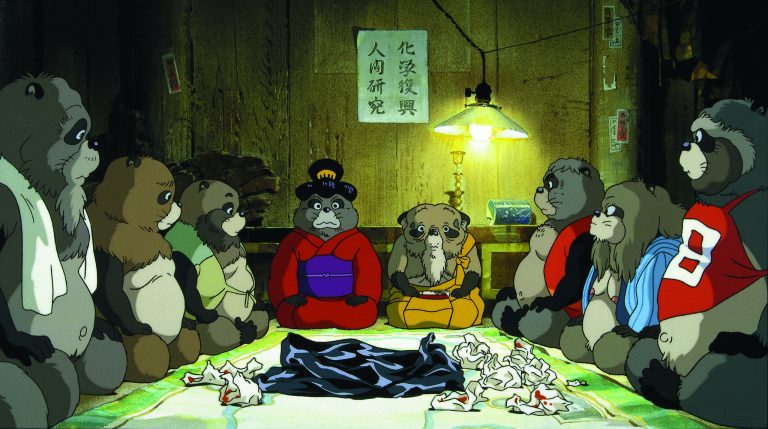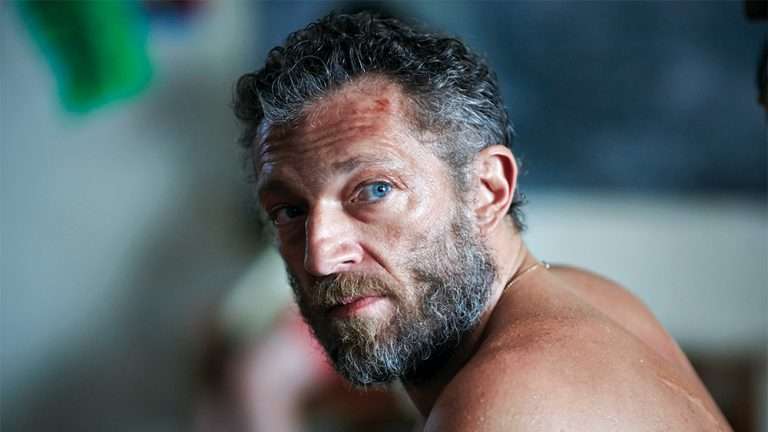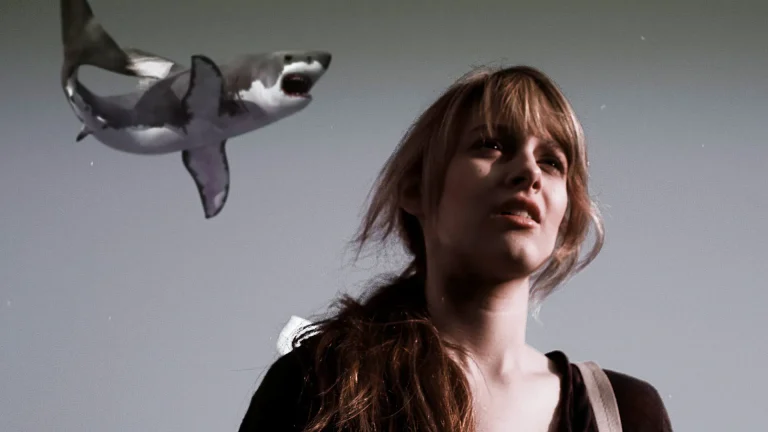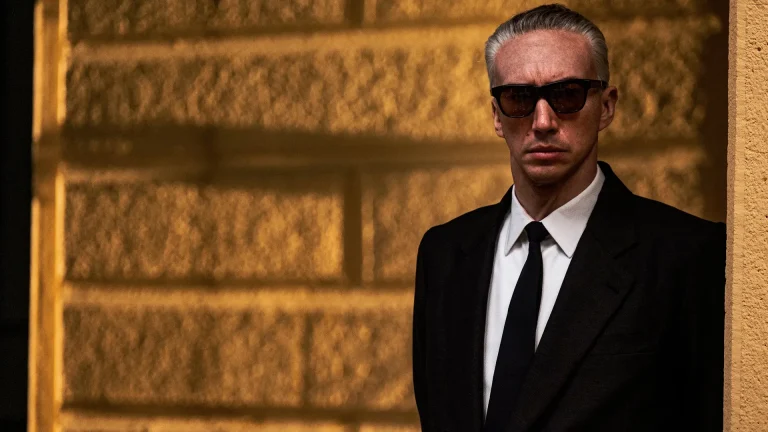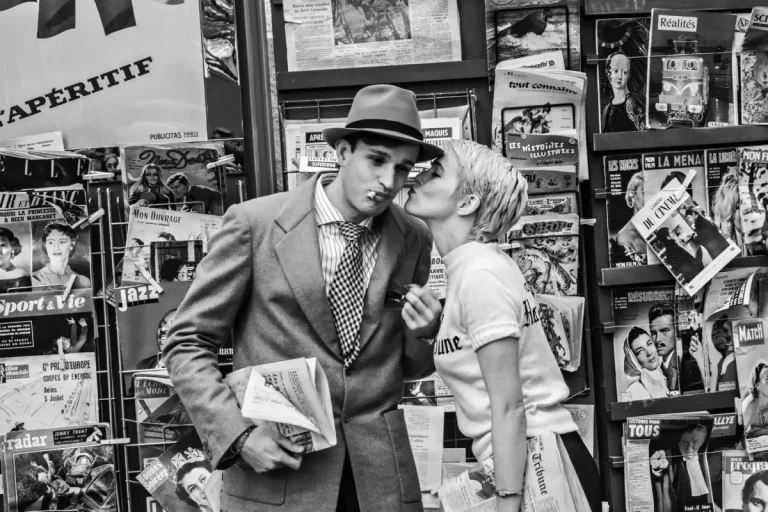Scroll through any list of the greatest achievements in American film, and Billy Wilder’s work is bound to show up. Arguably the most successful of Hollywood’s post-war émigrés, Austria-born Wilder built a reputation for razor-sharp screenplays in the 1930s before transitioning to the director’s chair.
His third film in America, “Double Indemnity” (1944), would prove to be his first masterpiece and the launching pad for the themes and ticks that would recur throughout his body of work. The man could tackle film noir, romantic comedy, war movies, farce, courtroom dramas, and everything in between. He imbued each genre with his trademark wit and a knack for taut storytelling, which resulted in hit after hit during Hollywood’s golden age.
Wilder’s films and the actors in them have defined the era in the cultural imagination; it’s hard to think of many other directors with about a dozen movies most people on the street would recognize. It’s similarly challenging to think of many directors for whom “The Seven Year Itch,” “Stalag 17,” “The Lost Weekend,” and “One Two Three” would only make the honorable mentions. Yes, Wilder really was that good, and whether you’re seeking cozy escapism or hard-hitting pulp, this list is bound to have a Hollywood classic waiting to be rediscovered.
10. Fedora (1978)
Like many of his peers from the studio system, Wilder struggled to adapt to the changing tides of New Hollywood, which rendered the star-driven, big-budget escapist fare he was most known for obsolete. Indeed, when “The Godfather” and “The French Connection” were sweeping up Oscars, films like the middling Walter Matthau and Jack Lemmon comedy “The Front Page” seemed like relics of a bygone era. Undeterred, Wilder rediscovered his artistic mojo with this metatextual drama, which reflects on his, and by extension, his generation’s, fall from relevancy.
William Holden stars as Barry Detweiler, an independent film producer who arrives on the island of Corfu attempting to coax the evasive, aging movie star Fedora out of hiding. The modestly budgeted French-German production signals Wilder’s acknowledgment of new audience sensibilities. The first two-thirds play as a compelling mystery anchored by Holden’s effectively bemused central performance, a man caught out of time struggling to play catch-up with the labyrinthine schemes assembled around him.
The ensuing plot twist is classic Wilder, arguably a little clunky but undeniably thrilling and unexpected: the character of Fedora always existed more as a construct than a person, after all. Throw in surprising cameos from Henry Fonda and Michael York and hilariously self-knowing lines about how “guys with beards” have taken over Hollywood, and you have a terrific late-period romp from the master, revisiting old terrain and discovering pastures new in the autumn of his career.
9. Irma la Douce (1963)
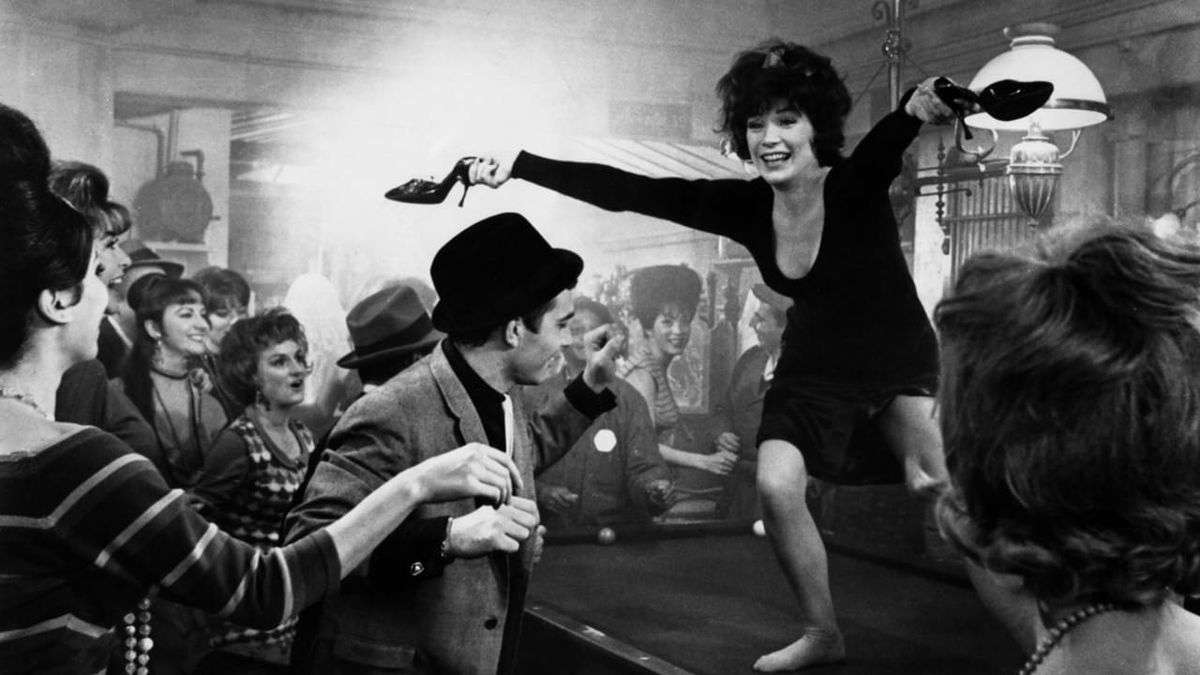
Reuniting the team behind the Oscar-winning classic “The Apartment” was never going to be easy. Still, Wilder and stars Jack Lemmon and Shirley MacLaine achieved something almost as wonderful with “Irma la Douce.” Set in Paris (or, rather, a beautiful soundstage), MacLaine plays the titular Irma, a lady of the night who begins a fractious apartment share with former policeman Nestor.
If the plot sounds familiar, be assured that this is a very different beast from “The Apartment,” a film with a dazzling color pallet and broad comic appeal that is more in tune with the MGM musicals of the era than Wilder’s previous work. In “Irma la Douce,” Wilder proves he can excel in both the subtlest of details and the broadest of strokes, a sure sign of a brilliant artist.
While “The Apartment” was MacLaine’s movie, “Irma la Douce” (despite its title) is a Lemmon picture through and through. No ranking of Billy Wilder movies is complete without a reverent word or two for Lemmon, his most frequent collaborator. His everyman charm and quiet vulnerability are exploited brilliantly here.
The character of Nestor is a man so desperate and jealous that he undertakes a hair brain scheme with the help of an overly qualified barman to keep his wife faithful. There is a litany of terrific running jokes, visual gags, and performances from both the leads and especially the side characters, which all dutifully contribute to a tone of beautiful comic escapism. Don’t overlook this loveable gem when going through Wilder’s golden period.
8. Sabrina (1954)
One of Wilder’s most durable skills was his ability to direct some of Hollywood’s brightest superstars, managing their egos, recognizing their strengths, and coaxing out of them some career-best work. “Sabrina” hosts three of the biggest stars of the 1950s on top of their game. Audrey Hepburn is elegant, charming, genteel but stern and, of course, fashionable in a way that continues to capture the imagination several decades later.
Humphrey Bogart provides an ideal counterweight with his unflappable sense of cool. While William Holden may be the least iconic of the three, he carries himself with an immense affability, a more world-weary version of the Lemmon archetype.
The chemistry between the three fizzles and pops throughout this charming, deliberately low-key romantic comedy. Wilder’s mistake with some of his later romantic comedies was to blow them up to technicolor and expand their scope.
In “Sabrina,” he realizes the potential of letting movie stars soar with more rudimentary filmmaking. That’s not to say there isn’t a healthy dose of escapism within the high-class milieu Wilder depicts here. I appreciate the movie’s scaled-down technical aspects but look elsewhere if you want a cerebral character drama. Wilder also knew his audience’s tastes and served them perfectly. The original release poster promises drama, laughter, excitement, and love; you get all four in generous doses.
7. Witness for the Prosecution (1957)
Wilder wouldn’t be the first choice of many to direct a courtroom dram. Still, his adaptation of “Witness for the Prosecution” proved that he and Agatha Christie were perfect artistic bedfellows. The director maintains the biting British wit of the original text and proves himself a master formalist in the blocking and angles he uses to shoot a single space. The courtroom in “Witness for the Prosecution” is an arena where the battle of the sexes, post-war xenophobia, and the very essence of the British national character are on trial, not just the former soldier Leonard Vole, who has been accused of murdering a wealthy aristocrat for her inheritance.
Tyrone Power plays Vole with intensity and pathos, with Marlene Dietrich in one of her most excellent performances as his German wife, Christine. Star of the show, however, is Charles Laughton, the great British actor who commands the screen with his charisma, comic timing, and moments of dramatic heft. His character, the lawyer Sir Wilfrid Robarts, is concerned with the capabilities of the law and the certainties justice provides, and convictions are thrown into doubt by Christine’s behavior.
The clashes between the two illustrate the difficulties of Anglo-German relations after the war, further complicated by the numerous plot twists at the tail end of the picture. As an Austrian immigrant to Hollywood, perhaps Wilder found this dramatic throughline especially compelling. Whatever it was that did attract him to the material, it was a worthwhile genre experiment, delivering another stone-cold classic.
6. Ace in the Hole (1961)
It can be hard to place the expectations of an auteur filmmaker on an old Hollywood don; after all, these were men who worked on commission in a factory production line. However, Wilder’s continued fascination in his work with the press and its machinations is telling to his personal preoccupations and his biography. Wilder worked as a tabloid journalist in Weimar, Germany, where his trust in the media apparatus was clearly dented. Rather than an All the President’s Men-style fable on the power of journalistic integrity, his drama “Ace in the Hole” depicts the media as unhelpful vultures capitalizing on a tragedy.
Also Read: 20 Best Investigative Journalism Movies, Ranked
Kirk Douglas stars in one of his best roles as Chuck Tatum, a journalist from the big city hoping to rejuvenate his career by decamping to small town Albuquerque to tell the story of a man stuck in a cave. The epic struggle to recover the man becomes a dual driving force of the narrative with Tatum’s professional ambitions. But Wilder’s script dares to keep Tatum unlikeable and egotistical, a man of redeeming virtues stuck in an inherently malicious industry.
This pessimistic view of journalism is surprisingly prescient and was perhaps a contributing factor to Ace in the Hole’s box office woes in 1951. Viewed today, it’s clear that this is one of Wilder’s most personal and brilliantly crafted films.
5. A Foreign Affair (1948)
One of the central appeals of “A Foreign Affair” is its complicated production history. A grant from the American government meant that Wilder was able to film on location in post-war Berlin, depicting the milieu of American soldiers who were now tasked with ‘winning the peace’ in a city ravaged by black market dealings and human desperation. It’s pretty astonishing to see a contemporaneous movie that is so frank in tackling the issues facing post-war Europe. The American soldiers are depicted as pillagers, while the Germans are resentful and unapologetic. There are no simple heroes and no easy answers.
Once again, Wilder operates with an incredibly talented cast here. Jean Arthur is one of the greatest actresses of the classic Hollywood era, capable of conveying a thousand emotions in the contours of her face. She is able to convey actual multi-faceted attraction in a way unrivaled in the Hayes-code era.
Opposite her as the alluring chanteuse in a seedy nightclub is Marlene Dietrich, delivering a performance that excellently reflects upon her own status in Western culture: how the perception of her exoticness has changed. The push-and-pull between them and the leading man, John Lund, is entertaining, witty, and fascinating. At the end of the day, “A Foreign Affair” may be an act of post-war jingoism from the victors, but with enough asterisks to render it a terrific romantic comedy and compelling time capsule.
4. Double Indemnity (1944)
This classic film noir was Wilder’s breakthrough as a director, telling a story of attraction and deceit so legendary that legions of filmmakers have sought to replicate its magic recipe. Yet no reboot or homage has ever captured the palpable sense of danger that permeates “Double Indemnity.” Fred MacMurray stars as Walter Neff, a cocksure insurance agent who is drawn into the orbit of Phyllis, the genre’s archetypal femme fatale who wants Neff to murder her husband so she can claim on the insurance. In their way is a hapless police force and Edward G. Robinson as Neff’s boss, an initially trusting ally who comes to suspect the evil lurking beneath this Californian landscape.
Wilder’s script, co-written with the famed novelist Raymond Chandler, is sheer perfection. In effect, it laid the groundwork for an entire genre of cinema that would come to dominate movie halls for the next decade. The seductive dialogue between Neff and Phyllis, the sharp twists and turns of the plot, the wartime sense of nihilism, and a belief in the capabilities of human evil – it would all seem a cliché if it wasn’t so breathtakingly original at the time. Add to the mix the stark black-and-white photography and the most remarkable performance of Stanwyck’s storied career, and you will have a film fully worthy of its classic status.
3. The Apartment (1960)
This iconic film pairs Jack Lemmon and Shirley MacLaine in a razor-sharp skewering of sexual mores and office politics. The script is perhaps Wilder’s best; alongside frequent collaborator I.A.L. Diamond, he imbues a cynical tale of corporate skullduggery into one of history’s warmest, most rewarding romantic comedies.
Indeed, the best screenplay was one of the three Oscars Wilder bagged for this film, cementing his status as the primary auteur of the era, a man who, in the Hollywood system, wrote, directed, and produced his own distinctive pictures. It endures to this day as both a Christmas-adjacent classic and as an example of Wilder, Lemmon, and MacLaine firing on all cylinders.
Lemmon stars as Bud Baxter, a mild-mannered office clerk who befriends his superiors by loaning out his apartment for their affairs. The convoluted living situation Baxter is faced with is prime terrain for some Wilder comedy of manners and even a taste of slapstick, a mix of comic elements that Lemmon is uniquely equipped to handle.
The movie goes from great to legendary whenever MacLaine is on screen, an effervescent, radiating ball of energy and charm, a headstrong elevator operator who won’t suffer fools. You know MacLaine and Lemmon are bound to get together. After all, their chemistry is so electric, but Wilder and Diamond’s script keeps you guessing until the very end. If “The Apartment” is still a blind spot for you, I won’t spoil the details; however, if you’ve already seen it, then it’s always worth revisiting regardless of the time of year.
2. Some Like It Hot (1959)
For a whole generation of moviegoers and classic Hollywood geeks, “Some Like It Hot” remains a go-to answer as the funniest comedy of all time. This gender-bending, breakneck blend of crime, comedy, and romance pairs the loveable Jack Lemmon with notorious bad boy Tony Curtis, the perfect double act as hapless musicians forced to disguise themselves as women to hide from the mob.
The drag jokes have aged surprisingly well, eschewing the cheaper gags for some hilariously convoluted hijinks and the occasional gesture towards the banality of the gender and sexual binary. The movie’s iconic final line is a joke, but it also reads as a comment on the movie’s broader approach to gender fluidity.
This isn’t even mentioning Marilyn Monroe, the most iconic performance from perhaps the most iconic Hollywood star of the 20th century. No director better utilized her blend of ditsy charm and cunning know-how. Placing her in a plot with two wise-cracking buffoons makes the most of her talents, and she is more than adept at Wilder’s acerbic dialogue.
The script sees Wilder and Diamond at their most crowd-pleasing and formally intricate, each scene a set piece in miniature that can make an audience tense up with suspense and cringe before the sweet release of a visual gag or snappy one-liner. For any aspiring screenwriter or, indeed, director of comedy films, “Some Like It Hot” remains essential, far less antiquated than comedies from its era, and still laden with laughs.
1. Sunset Boulevard (1950)
“Sunset Boulevard” is perhaps the greatest movie Hollywood has ever made about itself. Released in 1950, the film reckons with the industry’s past through the story of Norma Desmond, once a star of the silent screen who is now a recluse and eccentric. Desmond is played by Gloria Swanson, herself a silent movie star of the 1920s, in an ingenious piece of metatextual casting. She is pitch-perfect for the role, vulnerable but eerily intimidating with the power and fame she accrued in her youth like an albatross around her neck. William Holden is once again the Tinseltown everyman, a commercial writer hoping to get Desmond back on screen for his new screenplay.
Many films have weighed in on Hollywood’s past and present, but few have been quite as jaundiced as Wilder’s take. “Sunset Boulevard” is a wonderful film, a warm, quickly-paced, and rewarding crime drama with a psychologically compelling lead and fascinating subtext. Still, this might be the most cynical work among all the old Hollywood classics. Behind the glitz and glamour of the movies is a vacant moral core defined by material wealth and self-image, influenced as much by the film executives and moviegoers as by the machinations of a consumerist society.
Norma Desmond cannot face viewing herself as anyone other than the name in shining lights on the movie poster, to the extent of delusion in one of the most iconic closing shots in movie history. It’s a marvelous and cruel irony that this is now better remembered than any of Swanson’s silent pictures, but it’s also undoubtedly the best movie she, and Billy Wilder for that matter, ever made.

